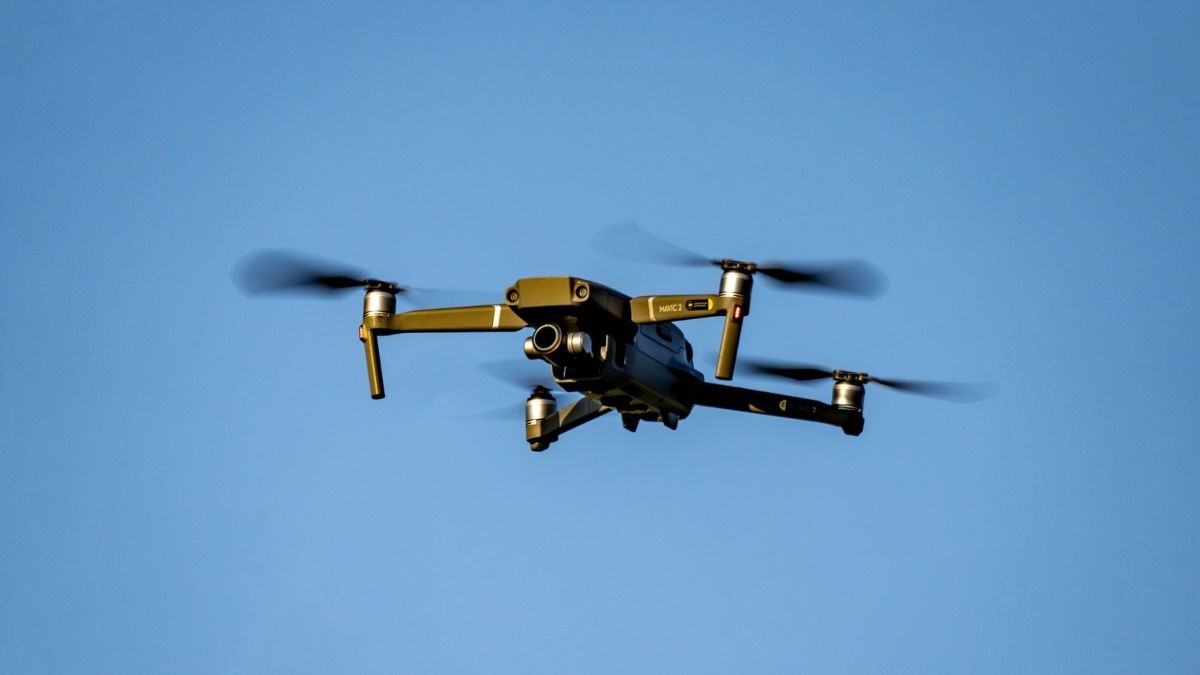A Country-by-Country Guide to Central America Drone Laws and Regulations
8 min readA comprehensive guide to drone laws in Central America, covering regulations, restrictions, and requirements for all seven countries in the region.
The post A Country-by-Country Guide to Central America Drone Laws and Regulations appeared first on Central America.

A guide to Central America drone laws, covering regulations, restrictions, and requirements for all seven countries in the region.
Drones have become essential tools for both recreational and professional use, from capturing vacation memories to conducting agricultural surveys and infrastructure inspections. As their popularity grows, so does the need for clear regulatory frameworks to ensure safe and legal operation.
In Central America, drone regulations vary by country. While most nations allow drones with specific restrictions, Nicaragua has maintained the region’s strictest stance, recently formalizing its long-standing drone restrictions through new legislation.
This guide examines the current drone regulations across Central America, providing essential information for recreational users, professional operators, and businesses planning to use drones in the region. Understanding these regulations is crucial for ensuring compliance and safe operation across different jurisdictions.
What to Expect in Each Country
Each Central American country has its own approach to drone regulation, which we outline below on a country-by-country basis:
Belize
Belize takes a strict approach to drones, particularly for visitors. If you’re planning to fly a drone here, you’ll need to understand some important restrictions. The country only permits drone usage for commercial purposes, and you must have a partnership with a local Belizean business or organization to get approval.
The Belize Department of Civil Aviation (BDCA) requires formal authorization for all drone operations. To get this, you’ll need to submit a detailed letter to the Director of Civil Aviation explaining your purpose, planned flight locations, and dates. You’ll also need to complete their Drone Application Form, which you can request via email.
Even with approval, there are strict operational limits. You must keep your drone at least three miles away from any airport or airfield. While commercial operators need to register their drones, they interestingly don’t need a pilot’s license or insurance. The registration process includes submitting documentation about your local business partnership and intended use.
For tourists hoping to capture vacation footage with a drone, unfortunately, this isn’t currently possible. Hobby and recreational drone flights are not permitted at all, regardless of the drone’s size or intended use. The government is reportedly working on developing regulations for recreational drone use, but for now, only commercial operations are allowed.
Costa Rica
Costa Rica is one of Central America’s most welcoming environments for drone operators, with clear rules for both recreational and commercial use. The country’s approach balances safety with accessibility, making it a favorite destination for drone enthusiasts.
Recreational drone pilots don’t need a license in Costa Rica, although they need to register drones weighing more than 25kg. The registration process is straightforward and can be completed online through the government’s official website. Commercial operators face additional requirements, including certification from the Technical Council of Civil Aviation and completion of specific training programs.
Key flight restrictions include a maximum altitude of 400 feet and maintaining an 8-kilometer distance from airports. The country has designated several no-fly zones, including the Arenal Volcano, the La Palma passage, the Zurqui Tunnel, and various government facilities. You’ll also need to avoid flying directly over buildings and maintain a 30-meter distance from structures.
For international visitors, Costa Rica recognizes foreign drone registrations and pilot licenses, though you’ll need to notify authorities before flying. The country also recommends (but doesn’t require) insurance coverage for both recreational and commercial operations. All flights must occur during daylight hours and in clear weather conditions, maintaining visual line of sight with your drone at all times.
El Salvador
El Salvador maintains a relatively open and straightforward approach to drone operations, welcoming both recreational and commercial users. The country’s drone laws provide clear guidelines while keeping bureaucracy to a minimum.
All drone operators must register their devices with the Civil Aviation Authority (AAC). The registration process costs $20 and includes both the drone and the operator. For foreign visitors, you’ll need to provide a copy of your passport to complete the registration. This requirement applies to all drones, regardless of size or intended use.
The country implements standard safety restrictions: keep your drone below 400 feet, maintain a 6km distance from international airports, 2km from private airports, and 250 meters from heliports. Speed limits are set at 70 km per hour. An interesting aspect of El Salvador’s regulations is the insurance requirement for commercial operations – businesses need $1 million in liability coverage.
No-fly zones include military facilities, voting centers, prisons, judicial courts, electric stations, hydroelectric and geothermal plants, maritime ports, hospitals, embassies, and frontier zones. You’ll also need written permission to fly over private property. Night flights are prohibited, and operators must maintain visual line of sight with their drones at all times.
Guatemala
Guatemala employs a practical three-tier classification system for drones, making it easy to understand which rules apply to your device. The categories include micro UAVs (under 100 grams), small UAVs (between 100 grams and 150 kilograms), and large UAVs (over 150 kilograms).
For recreational pilots flying outside populated areas, Guatemala offers relatively relaxed regulations, especially for micro and small UAVs. However, you must declare your drone at customs when entering the country, and depending on its classification, you may need to register it with the Dirección General de Aeronáutica Civil (DGAC).
The registration process involves completing a notarized form and submitting it to the National Aeronautical Registry. Once approved, your drone receives an identification number which must be visible on the device. Additionally, all drones must carry a metal badge showing the model, series, owner, and identification information.
Key operational restrictions include maintaining a 5-kilometer buffer zone around airports and following appropriate lighting requirements for night flights. Commercial operators need to obtain a Certificado Operativo (CO), though recreational users face fewer restrictions when flying below 400 feet. While insurance isn’t mandatory, it’s strongly recommended for all drone operations in Guatemala.
Honduras
Honduras has a comprehensive drone regulatory framework with clear categories based on weight and intended use. The country divides drones into three main categories: micro (under 250g), mini (250g to 2.5kg), and small (2.5kg to 25kg), with different requirements for each class.
All drone operators must register their devices with the Honduran Civil Aviation Agency (AHAC). The registration process includes submitting photos of the drone and ground control station, along with operator identification. Commercial operators need additional documentation, including an operator’s manual and insurance coverage.
Flight restrictions in Honduras are specific and well-defined: no operations above 400 feet, no flying in adverse weather conditions, and maintaining visual line of sight. The country establishes clear no-fly zones around airports (5km), uncontrolled aerodromes (3km), and heliports (1km). A unique aspect is the 2km restriction around presidential locations and high-security areas.
Prohibited areas include military installations, the Presidential House, Supreme Court, National Congress, power stations, hospitals, prisons, diplomatic buildings, and biological reserves. For commercial operations, additional permissions may be required depending on the nature of the work. The registration fee is modest at $10, making compliance accessible for most operators.
Nicaragua
Nicaragua has long maintained the strictest drone regulations in Central America. Since 2014, the country has heavily restricted drone usage. These original restrictions limited usage to a small operational cylinder of 30 meters radius and 30 meters height around the operator, effectively making most typical drone uses impossible.
In December 2024, Nicaragua formalized and strengthened these restrictions with the new “Law for the Regulation and Use of Unmanned Air, Naval, and Land Resources,” effectively banning all drone use in the country. This law now requires all drone owners to surrender their devices to the Ministry of the Interior with potential legal consequences for non-compliance. The only exceptions are for military, police, and government agencies conducting security, national defense, and public safety operations. Needless to say, tourists and visitors are not allowed to use drones in Nicaragua at all. Anyone trying to bring a drone into the country will have their device taken from them.
Panama
Panama has a four-tier weight classification system for drones: micro (up to 250g), small (250g to 25kg), light (25-150kg), and heavy (over 150kg). This detailed categorization helps operators quickly understand which rules apply to their specific drone.
Each weight class has distinct altitude restrictions: micro drones can fly up to 30 meters, small drones up to 60 meters, and light drones up to 120 meters. All operators must stay within 500 meters horizontally from their position, regardless of drone size. Speed limits are set at 130 kilometers per hour for all categories.
The country requires Certificates of Operation for all drone pilots, though they may recognize certificates from other countries (check with the AAC for verification). Insurance is mandatory for all drone operations, showing Panama’s focus on safety and liability protection. Commercial operations require additional approval from the Civil Aviation Authority.
Specific distance restrictions apply: maintain 8 kilometers from airports, 150 meters from buildings in cities, and keep 30 meters horizontally and 10 meters vertically from people. Panama also requires all operations to be insured, distinguishing it from some neighboring countries. The registration process includes training requirements and detailed documentation, especially for commercial operations.
Which Countries in Central America Are Most Drone-Friendly?
Here’s how Central American countries rank from most welcoming to most strict for drone pilots:
- Costa Rica – The most welcoming, with clear rules for both hobby and business use. No license needed for fun flights, and registration is straightforward.
- El Salvador – Pretty open, with simple guidelines for everyone. Just remember that insurance requirement for business users.
- Guatemala – Generally friendly, especially for hobby flyers away from cities. Their three-size system makes rules easy to understand.
- Panama – Fair rules with good guidelines, though you’ll need certificates to fly. Their weight classes help you know exactly what you can do.
- Honduras – Stricter rules and more no-fly zones, but still allows both hobby and business flights if you register.
- Belize – Very limited: business flights only, and you must work with a local company. No tourist drone flights allowed.
- Nicaragua – The strictest: no drone use allowed unless the president says okay.
Most countries share some basic rules: don’t fly too high (usually 400 feet), stay away from airports, and follow stricter rules for business use.
What This Means for Drone Pilots in Central America
Drone rules in Central America vary widely from country to country. Costa Rica welcomes responsible drone use, while Nicaragua has banned them entirely. If you’re planning to fly a drone in Central America, research your destination’s rules carefully and get any needed permits well in advance.
Remember that drone technology keeps improving, and rules often change to keep up. Always check the latest regulations before you fly. Whether you’re capturing vacation memories or doing business work, following local rules helps keep everyone safe and ensures drones can be used responsibly in the future.



